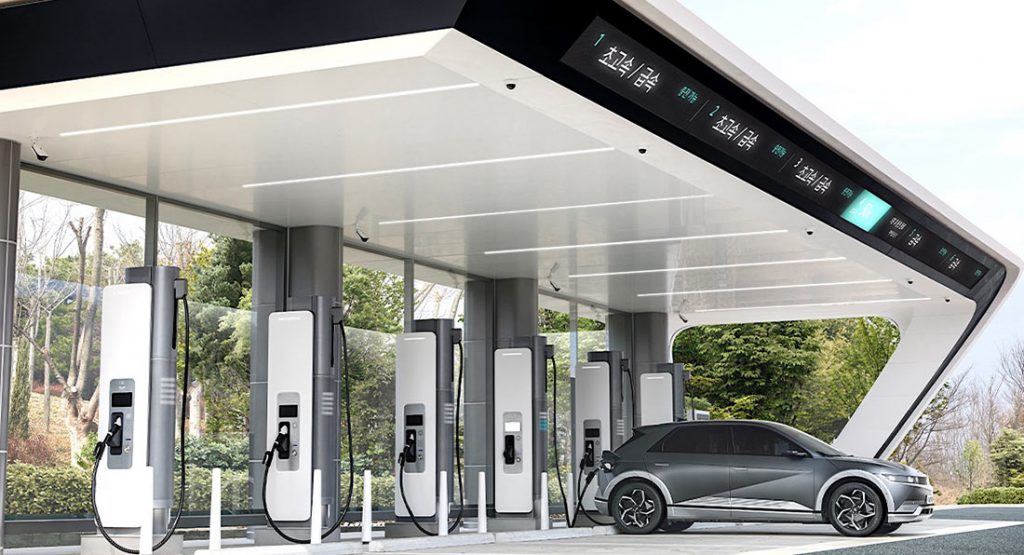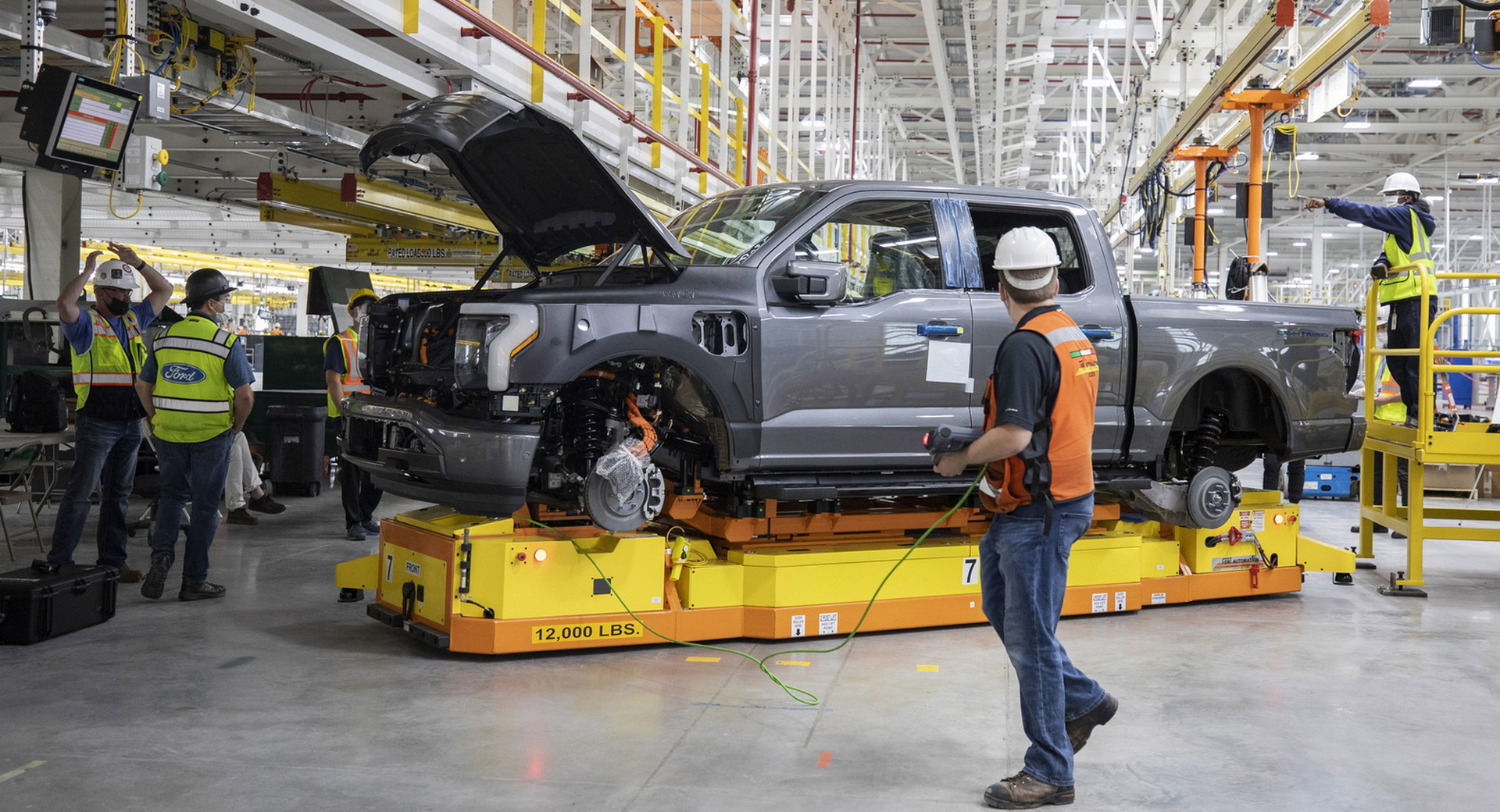Last week, heads of state from around the world met in Glasgow, Scotland, for COP26, trying to put in place plans that will help our planet avoid a climate catastrophe. And electric cars form part of those plans.
U.S. President Joe Biden has a goal of making half of all vehicle sales in the U.S. electric by 2030, by which time other countries including France and the UK will have banned the sale of conventional ICE cars altogether. Norway, leading the charge, will have hit that legal milestone five years earlier, in 2025, but may actually end up selling its last combustion-engined car as early as 2022.
But not everyone is looking forward to the EV takeover, and not just because they’re going to miss the sound of straight-piped V12 Ferraris on YouTube. Electric cars might be a key component in our strategy to save the planet, but they aren’t as angelic as they might first appear.
There’s the problem of where the electricity comes from to make them run, of course. And extracting the lithium and cobalt needed to make their batteries comes at a huge environmental cost due to mining activity in places like Chile. But the mass switch to EVs will cause further devastation closer to home: it’s going to cost thousands of people their jobs.
Related: Study Shows EVs Have Much Lower Service Costs Compared To ICE Models
That’s the tenet of a recent Bloomberg article titled “The Coming Electric Car Disruption That Nobody’s Talking About”. The authors investigate the wider implications of a mass EV take-up, shining a spotlight on often peripheral sectors of the car industry that could find themselves as redundant as farriers did when the car itself made horses obsolete in the early 20th century.
Simpler Cars, Fewer Jobs
We’re often told that one of the key advantages of the electric car is its simplicity. Your average EV has far fewer moving parts than an equivalent ICE machine, so it should be more reliable. That’s great for the driver, who has less reason to visit a dealership or local mechanic, but not so great for the guys working at the dealership, or the local independent shop, whose numbers will almost certainly be reduced due to a slowdown in demand.
Now think about all of the suppliers making the components that go into your average ICE vehicle. Not the engines, which are often built in-house by OEMs, but the smaller businesses making hoses, clips, alternators and filters. Some of them might be able to adapt to pick up different contracts, and of course even EVs need brakes, tires, dampers and bushes, but there’s little doubt some suppliers might go to the wall.
According to the Motor & Equipment Manufacturers Association, the U.S. auto parts industry employs almost 5 million people and accounts for 2.5 percent of U.S. GDP. But hundreds of thousands of those jobs might disappear. Coming off the back of setbacks caused by the COVID pandemic and, more recently, the semiconductor shortage, that’s not great news.
The Ripple Effect
And if most of us are able to charge our EVs at home, and improving battery tech means those cars will be able to drive for 300+ miles on a charge, we’ll rarely need to visit gas (or should we say charge?) stations, where we’re often tempted to pick up a drink, sandwich, newspaper or bar of chocolate. When the UK was in the midst of the recent fuel supply crisis, service station owners complained that the loss of footfall in their stores was as damaging to their incomes as the inability to sell fuel.
But the slowdown in demand for fuel will also have a huge impact. Bloomberg highlights that less demand for pump fuel means less demand for the ethanol that goes into the blend we buy at the pumps. And producing that ethanol accounts for one third of the U.S. corn crop.
The Churn Of Technological Innovation
Change won’t happen overnight. ICE cars will still be sold for several years to come, and those cars will still be in circulation for a decade after that. But that change is definitely coming, and predictably the auto workers unions are keen to ensure they get a slice of the newly configured industry pie, suggesting that if the car companies were happy to take taxpayers money from the government to survive the recession a decade ago, they should be obliged to protect those taxpayers’ livelihoods in the future.
Companies like Ford and GM are investing heavily in battery plants, bringing jobs to places like Ohio, Tennessee and Kentucky, though those jobs may not be United Auto Workers (UAW) jobs, and they won’t be much comfort for workers in Detroit concerned about their own long term futures.
These kind of major technological shifts always create and kill jobs, providing amazing opportunities for some, and abject misery for others. Think about the impact of the industrial revolution, the mass adoption of electricity, of air travel and computers, smartphones and MP3 audio files. By pure coincidence, while writing this story I learned about the closure of the print edition of UK modified car magazine, Fast Car, after 34 years, and it reminded me of the parallels between what’s going on in the car industry, and what’s simultaneously been happening in the media that covers it.
View this post on Instagram
Print magazine sales have been decimated over the last 20 years, and as traditional publishers expended energy in a futile attempt to reverse that decline, they often failed to invest in the new technologies that put them under threat. At the same time, a new breed of ambitious rivals sprung up, seizing the opportunities that same technology offered, producing websites, videos and social media content. You’re reading this post on one of them, Carscoops, right now. And you’ll probably watch something from another on YouTube, or like a picture on Instagram, at some point today.
When I got myself first gig at Autocar magazine 20 years ago this year, the title didn’t even have a website. Neither did Car when I moved there in 2004. But now 95 per cent of what I write is for online audiences, and when journalists drive a new car, such as the Audi RS3, they have to be prepared to present a video about it if asked by their commission editor, rather than just turn in some copy. You might well have similar change-related stories to tell from your life. You can’t always stop change (and you might not even want to), but you can do your best to be a part of it.







